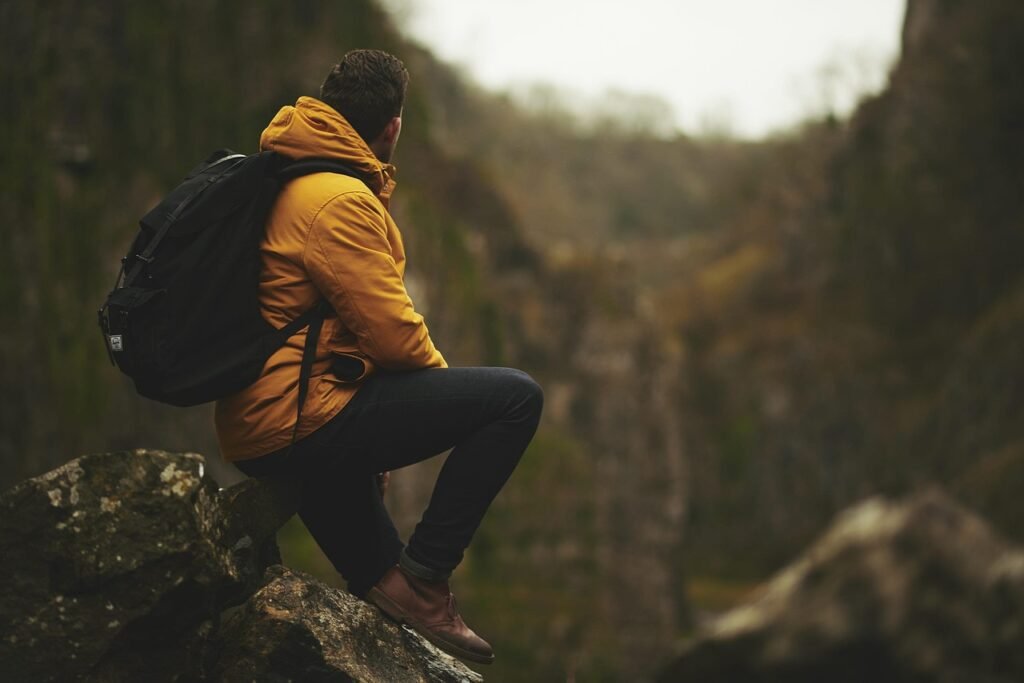What to Do If You Get Lost While Hiking: A Step-by-Step Survival Guide
Even the most prepared hikers can make a wrong turn. Trail markers fade, paths split unexpectedly, and smartphones can fail just when you need them. That’s why it’s crucial to understand what to do if you get lost while hiking before it happens. Having a plan not only increases your chances of getting back safely—it also helps you stay calm under pressure.
This comprehensive guide outlines exactly what to do if you lose the trail, including how to avoid common mistakes, assess your situation, and signal for help if necessary. Whether you’re hiking alone or in a group, these backcountry survival tips could make all the difference.

Why Hikers Get Lost
Hikers get lost more often than you might think. Even on well-maintained trails, visibility can change, signage can be unclear, and fatigue can impair judgment. Understanding why hikers get lost helps you stay vigilant.
Common Reasons Hikers Get Lost:
- Straying off-trail to explore or take photos
- Missing or confusing trail junctions
- Unmarked or poorly marked paths
- Sudden weather changes (fog, rain, snow)
- Distractions, such as conversations or wildlife
- Failure to check a map or GPS regularly
Getting disoriented doesn’t mean you’re inexperienced. It means you’re human—and being prepared can turn a scary moment into a manageable one.
How to Recognize That You’re Lost
One of the most important survival skills is early recognition. If you wait too long to act, you may wander deeper into unfamiliar territory.
Warning Signs You Might Be Lost:
- Trail markers have disappeared for a while
- You don’t recognize any nearby landmarks
- The terrain looks different than expected
- Your trail app shows no progress or confusing data
- Instinct tells you something feels wrong
If you’re unsure, stop immediately. Trying to push forward without a clear plan is one of the most common mistakes hikers make.
First Things First: Use the STOP Method
The STOP method is a wilderness protocol designed to prevent panic and help you think clearly when you’re off-course. It’s the first step in knowing what to do if you get lost while hiking.
- S = Stop: Don’t keep moving. Take a breath. Sit down. Avoid panic.
- T = Think: Consider where you were last on the trail. What direction did you come from?
- O = Observe: Look for trail signs, landmarks, footprints, or gear markers.
- P = Plan: Develop a strategy before doing anything else. Stay put if unsure.
This step alone prevents many rescue situations from escalating into life-threatening emergencies.
How to Reorient Yourself
If you believe you’ve only recently gone off the trail, you may be able to safely reorient without needing rescue.
1. Retrace Your Steps
Backtrack slowly and deliberately. Look for signs of your previous path—disturbed vegetation, footprints, broken twigs, or landmarks you remember. Stop every few minutes to reassess and ensure you’re not going deeper off course.
2. Use Trail Features to Navigate
Look for natural guides like ridgelines, rivers, or valleys. These large terrain features can help you determine direction or lead you back to a known point.
3. Consult a Map and Compass
If you packed a topographic map and compass (and know how to use them), now’s the time. Identify your last known location, orient your map to north, and use terrain association to match your surroundings with your map.
4. Check Digital Tools Carefully
If your phone has battery and signal, use a hiking GPS app like Gaia GPS or AllTrails to check your location. But don’t blindly follow digital directions—use them alongside physical features and common sense.
When You Can’t Find the Trail: Stay Put
If you’re more than 15–30 minutes off trail and unsure of your direction, your best option is usually to stay where you are.
Why Staying Put Increases Safety:
- Wandering increases your chances of injury or getting more lost
- Rescuers will search your last known location first
- You’re easier to locate when stationary
Set up in a visible clearing if possible. Lay out gear, make yourself comfortable, and prepare to signal for help.
How to Signal for Help
1. Use a Whistle
Three short blasts = universal distress signal. Repeat every few minutes. A whistle is louder and more effective than shouting.
2. Create Visual Signals
- Lay out brightly colored gear in an open area
- Use rocks or logs to form an “X” or “SOS” on the ground
- Reflect sunlight using a mirror or phone screen
3. Turn On Flashlights at Night
Strobe or waving light patterns attract attention, especially from aerial search crews or nearby hikers.
When to Call Emergency Services
If you have cell service and can’t safely return to the trail, call 911. Be clear and concise about your situation.
Information to Share:
- Last known location or trailhead name
- Estimated time you got off trail
- Any injuries or medical needs
- What gear, food, and water you have
If you have a personal locator beacon (PLB) or satellite messenger, activate it as directed. These devices immediately notify search and rescue teams with your location.
What to Do While Waiting for Help
- Stay dry, warm, and sheltered if possible
- Ration water and food, but don’t stop drinking entirely
- Avoid hiking further unless absolutely necessary for survival
- Continue signaling every 15–30 minutes
If night falls, set up camp using emergency gear. Use a headlamp or flashlight to remain visible.
How to Prevent Getting Lost While Hiking
1. Research Your Route in Advance
Use official trail maps, websites, and guidebooks. Read recent trip reports for up-to-date conditions.
2. Use a Navigation System
Carry both analog and digital tools: map and compass, plus a GPS app. Download offline maps before your trip.
3. Tell Someone Your Plan
Always leave a trip itinerary with a trusted friend or family member. Include trailhead location, planned route, and estimated return time.
4. Pack the Ten Essentials
- Navigation tools (map, compass, GPS)
- Extra food and water
- Insulation (jacket, hat, gloves)
- Sun protection (sunglasses, sunscreen)
- Emergency shelter (bivy sack or tarp)
- Headlamp or flashlight
- First aid kit
- Fire-starting tools (matches, lighter)
- Repair kit and multi-tool
- Emergency whistle and mirror
Final Thoughts
No one plans to get lost — but knowing what to do if you get lost while hiking can turn a crisis into a manageable situation. Stay calm, trust your preparation, and follow the STOP method. Whether you’re hiking solo or with others, having a strategy and the right gear will keep you safe and confident on every adventure.
Frequently Asked Questions
What should I do immediately after realizing I’m lost?
Stop moving and apply the STOP method: Stop, Think, Observe, and Plan. Staying calm and still is the best way to prevent further disorientation.
How long should I try to find the trail before calling for help?
If you’ve retraced your steps for 15–30 minutes with no success and have no clear idea where to go, it’s time to stay put and call for help or begin signaling.
Can I use my phone to get rescued if there’s no signal?
Some phones allow emergency calls even without a network. Alternatively, satellite messengers or PLBs work without cell service and can send your location to search and rescue teams.
What if I’m lost and it gets dark?
Stay in one place, use your flashlight or headlamp, and insulate yourself. Avoid moving after dark unless absolutely necessary to find shelter or avoid danger.
How do I stay visible to rescuers?
Spread out bright-colored gear, create signal shapes on the ground, flash lights, use a whistle, or reflect light with a mirror. Signal regularly until help arrives.
